The Article
R-N602 From Yamaha: On The Receiving End
19th October 2016
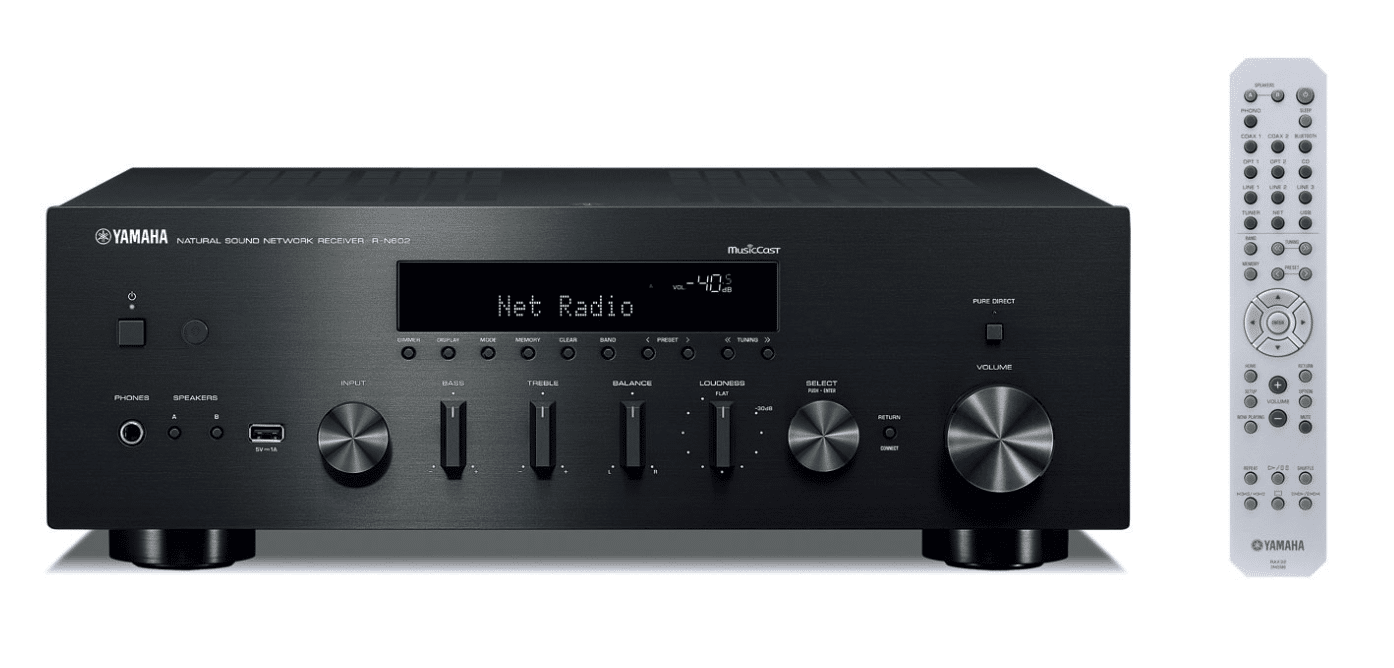
Sporting a retro amplifier design but packing in numerous digital and networking facilities, Paul Rigby reviews Yamaha’s budget receiver, the R-N602
It’s big, it’s meaty, it’s got buttons and switches and knobs and it’s shiny (silver) or its so dark that light falls into it (black, what else?) and you could put caterpillar tracks underneath it and invade a small neighbouring country without a shot being fired because the populous would run away from it, hands in the air, screaming hysterically. This is Yamaha going back to its 70s roots. You don’t look horizontally at the R-N602, you walk up to it, pause, then you lift your head slowly and see if you can make out the summit…somewhere in the clouds.
You also don’t turn on a 115W R-N602 via the on/off button, you send it a letter of introduction and then wait for permission.
While doing so, you can note that the R-N602 is designed to be used as part of Yamaha’s MusicCast network audio system that allows you to use all your MusicCast products together or separately, controlled from one app which, of course, also means popular streaming services (where applicable in supporting countries) such as vTuner internet radio, Pandora, Rhapsody, Spotify, SiriusXM, Napster and Juke. On the networking subject, the ‘Yammie’ also supports AirPlay, DLNA plus Digital Blocking (an iPod’s direct signal is sought feeding the Yamaha’s own DAC). An ECO mode reduces power by 20%, you have access to Bluetooth, Wi-Fi plus a Pure Direct button to bypass the majority of the amp’s electronics to enhance sound quality.
In terms of files support, the Yamaha supports 5.6MHz DSD and AIFF 24bit/192kHz, WAV/FLAC 24bit/192kHz plus the usual suspects via a Burr Brown DAC. There’s also a FM/AM tuner, speaker terminals for two systems and, oh yes, the ability to plug a turntable directly into the box because you get a phono amp, built-in. More about that later. Other sockets around the back, apart from plentiful source RCA-based connectors, include two opticals, two coaxial, a wireless port for a screw-in aerial plus the ability to connect Ethernet and a subwoofer.
IN USE
It’s bulky, retro and clunky. In fact, the hefty and expansive Yamaha glories in its retro clunkiness. It comes at you, arms open with that certain ‘look at me!’ exclamation as it displays hulking great knobs that control those old classic controls: treble, bass, balance and, don’t forget that old favourite, ‘loudness’, sitting next to more modern additions such as the USB source socket. Some might question the inclusion of such controls and I would agree that the treble/bass/balance/loudness quartet are worse than useless. That said, the Pure Direct removes any criticism because it allows the sound signal to skip right past them. Hence, their inclusion could be seen as ‘a bit of fun’. In these design terms and for this price…sure. Why not? The target audience, many of which will be maturing beginners with hi-fi experience that relates to their parents old system, may even see the inclusion of such controls as a comforting familiarity.
SOUND QUALITY
I began by spinning Buffalo Springfield’s For what It’s Worth (1966) on the Leema Elements CD Player. Three things hit me immediately. Firstly, the bass was very strong and punchy. Yamaha likes its lower frequencies and the performance here maintains the house sound which means that this track offered excellent bass force and foundation. The song was driven throughout with a strong rhythmic drive that gave the track an enhanced sense of pace.
There was a lack of engagement, though. By that, I means that the soundstage did sound a little stark. It was almost as if the guys played in a studio that was, by day, an operating theatre. There was a slight lack of soul and musicality in the R-N602s presentation so that the drums never really connected with the guitars or the emotional vocals. Then I noticed that the Pure Direct button had not been engaged. Turning this feature on bypassed much of the amp to provide a more direct sonic pathway. This improved the sound quality immeasurably, giving the vocals a more, well, human quality with delicate textures from the vocal chords more in evident while the guitars offered greater grit and involvement. Despite the good news, though, a certain analytical edge remained but the effect was greatly reduced in Pure Direct mode.
The sense of clarity from the upper midrange and treble enhanced the tonality of the music while there was tremendous instrumental separation around the soundstage so the band sounded relaxed and at ease with their playing. There was never any sense of tension. The air and space exhibited also gave the frequencies time to decay properly which enhanced the performance of these organic instruments, increasing detail.
These days, I only tend to handle MP3 files with rubber gloves and a pair of forceps but playing Kylie Minogue’s All the Lovers from her Abbey Road Sessions album in this execrable sound format sounded half decent via my Apple iPhone 6S over Bluetooth. There was plenty of room to be had while midrange and bass existed in an admirably balanced manner. Strings were thin and nasty, yes while Minogue’s vocals made her sound like she had a pinched face (I imagined her as the green-faced witch in the film, The Wizard of Oz, MP3s made Kylie sound just like that) but, even given the lack of musical data, the Yamaha performed tremendously to give you the best performance it could. As if the amp was exclaiming, “Look, guv, I haven’t got much to work with here…but this is the best I could do.” I’ve heard a lot worse, even via equipment price higher than this receiver.
Using a USB stick, I played the DSD version of the Allegro for Bach’s Concerto for Harpsichord, Flute and Violin via the front loading USB port and was pleased to hear the relatively spacious digital performance of the R-N602 continue here. Strings and the wind section did sound a little thin and slightly forced, though, even at this high resolution. The performance basically allied itself to the earlier CD tests, in this respect. That said, there was much to admire with the informative nature of the track giving this textured and detail arrangement time to manoeuvre while allowing complex instruments such as the harpsichord a chance to express itself.
Up until now, we had a reasonable digital power house that looked great on paper but offered no more than a ‘credible’ performance in reality.
Then something wonderful happened.
I wanted to test the internal phono amp of the Yamaha. At this price, it is more likely that users will be utilising the internal module and not spending out for an external phono amplifier. Pushing an analogue signal through this unit was fascinating because the results were surprisingly good. The slightly sparse nature of the presentation combined with the epic quality of the phono amp and the warmth of the basic vinyl signal to provide a big, bold, open and grand musical return. Trumpets sounded clear and brassy without a hint of stridency or brightness, saxophones were reedy and emotive, vocals offered a precision and enhanced diction and bass was firm, fast and informative. This heady mixture was quite a sonic revelation for the price!
CONCLUSION
The Yamaha R-N602 offers plenty of value for the money and a wide array of features with an appealing retro design. Despite the slightly constricted digital response in CD and general digital file terms, I was blown away by the analogue play and can whole heartily recommend this amplifier if you are looking for an amplifier to act as the heart to your vinyl hi-fi system.
In fact, I would go further than that and advise you not to look at this box as a multimedia receiver at all. Me? I would not buy it for its digital features. I would turn the feature list on its head. I would see this product as the amp section of a new vinyl system with plenty of bonus digital features added on because even if you saw the Yamaha as nothing else but a vinyl-based amplifier, it would still be good value. Anyone looking to set up a budget vinyl system really needs to place this box on their demo list and pronto.
YAMAHA R-N602 RECEIVER
Price: £339
Web: uk.yamaha.com/en
Tel: 01908 366700
For more specifications, click HERE
GOOD: Pure Direct mode engaged, open and natural phono output, feature count, Bluetooth, price
BAD: Pure Direct Mode disengaged, digital playback
RATING: 7
REFERENCE SYSTEM
Rega RP3 turntable
Leema Elements CD Player
Rega Brio-R amplifier
Spender S3/5R2 speakers
Chord Shawline cables

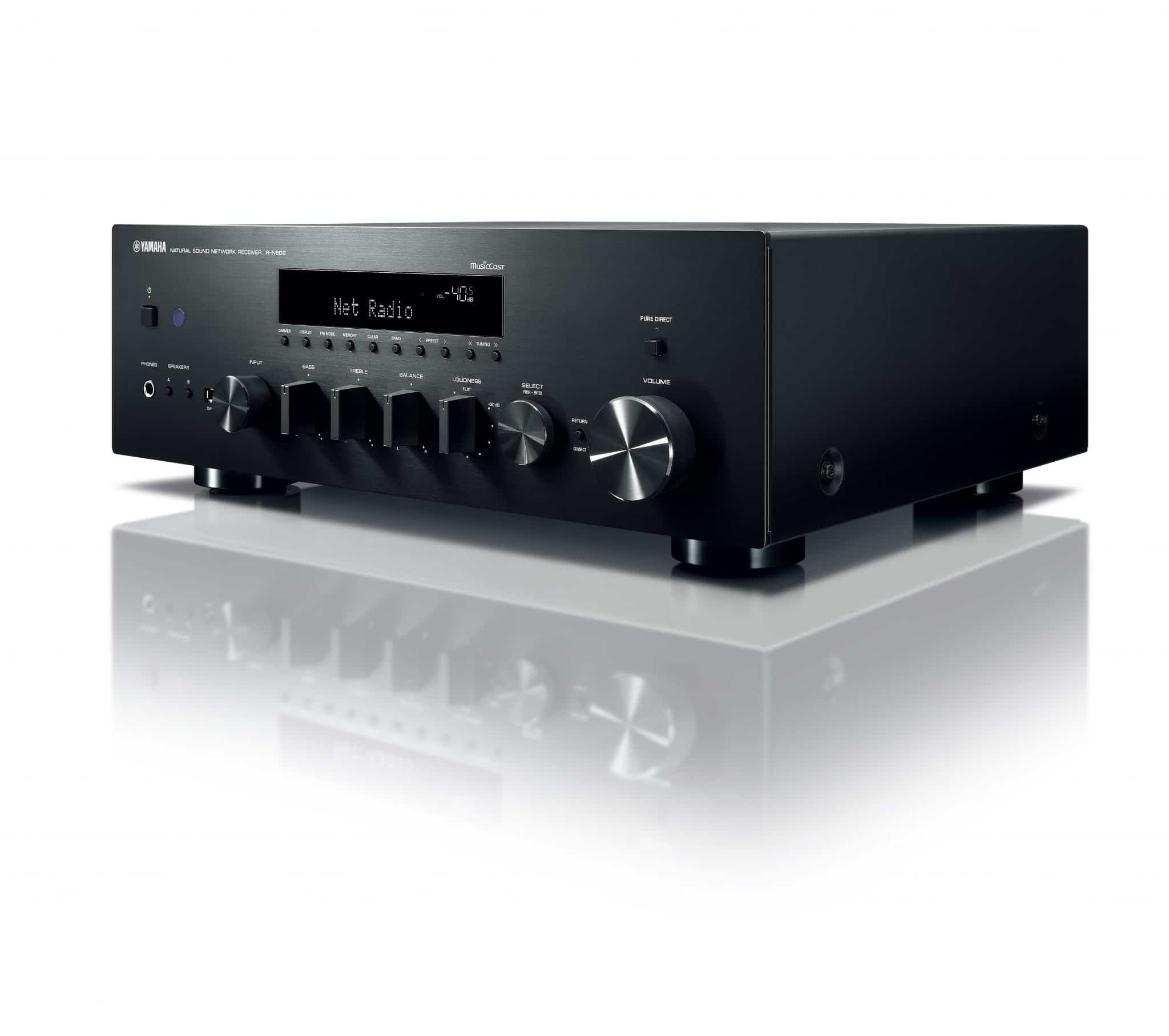
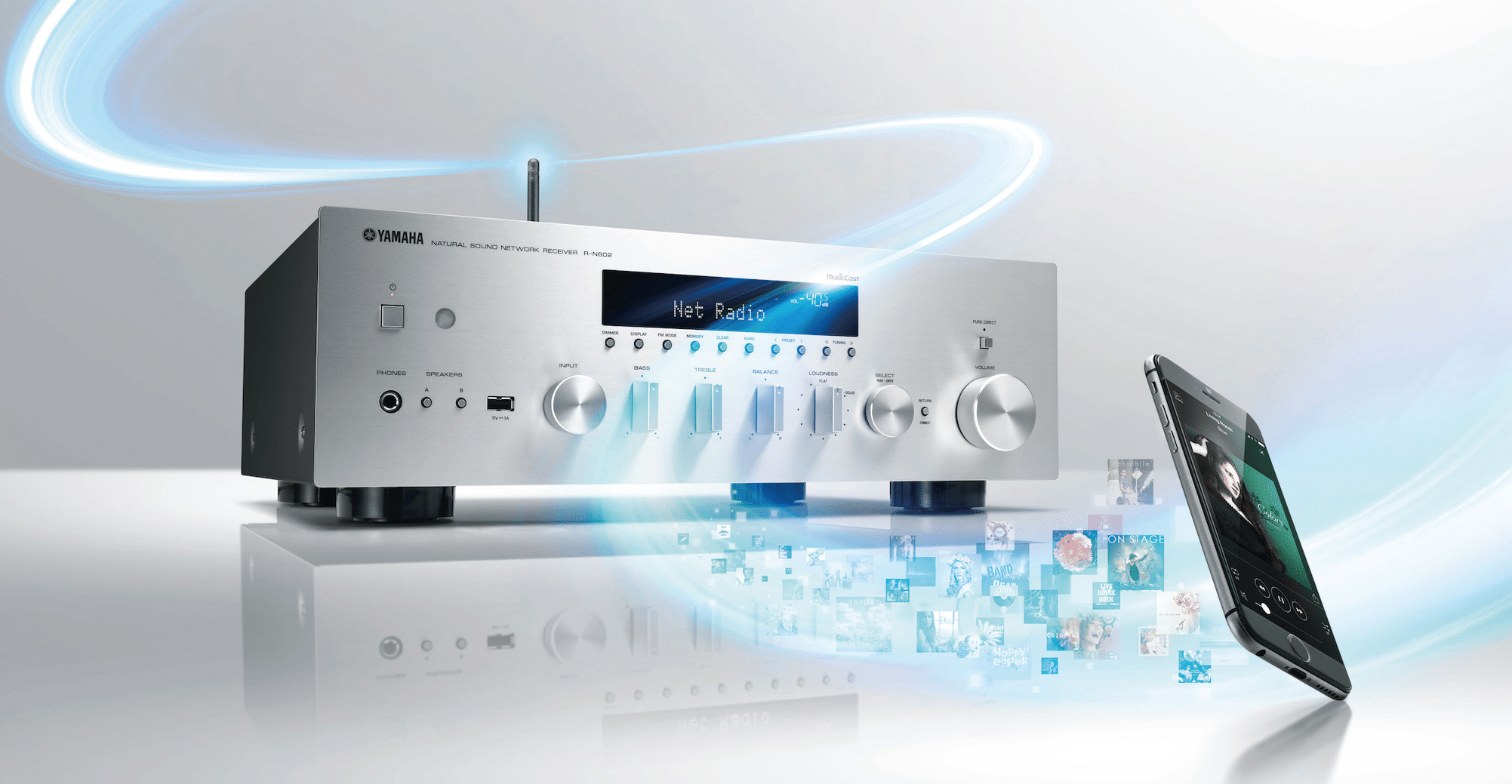
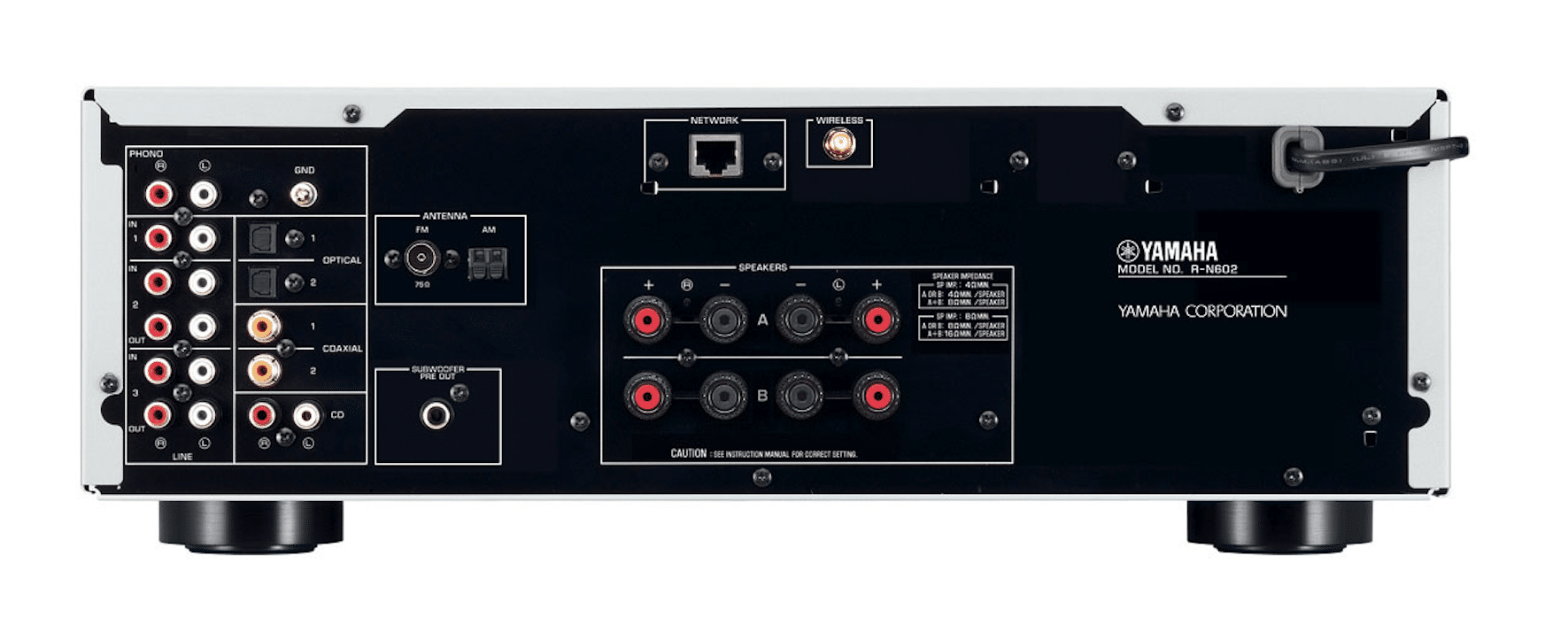
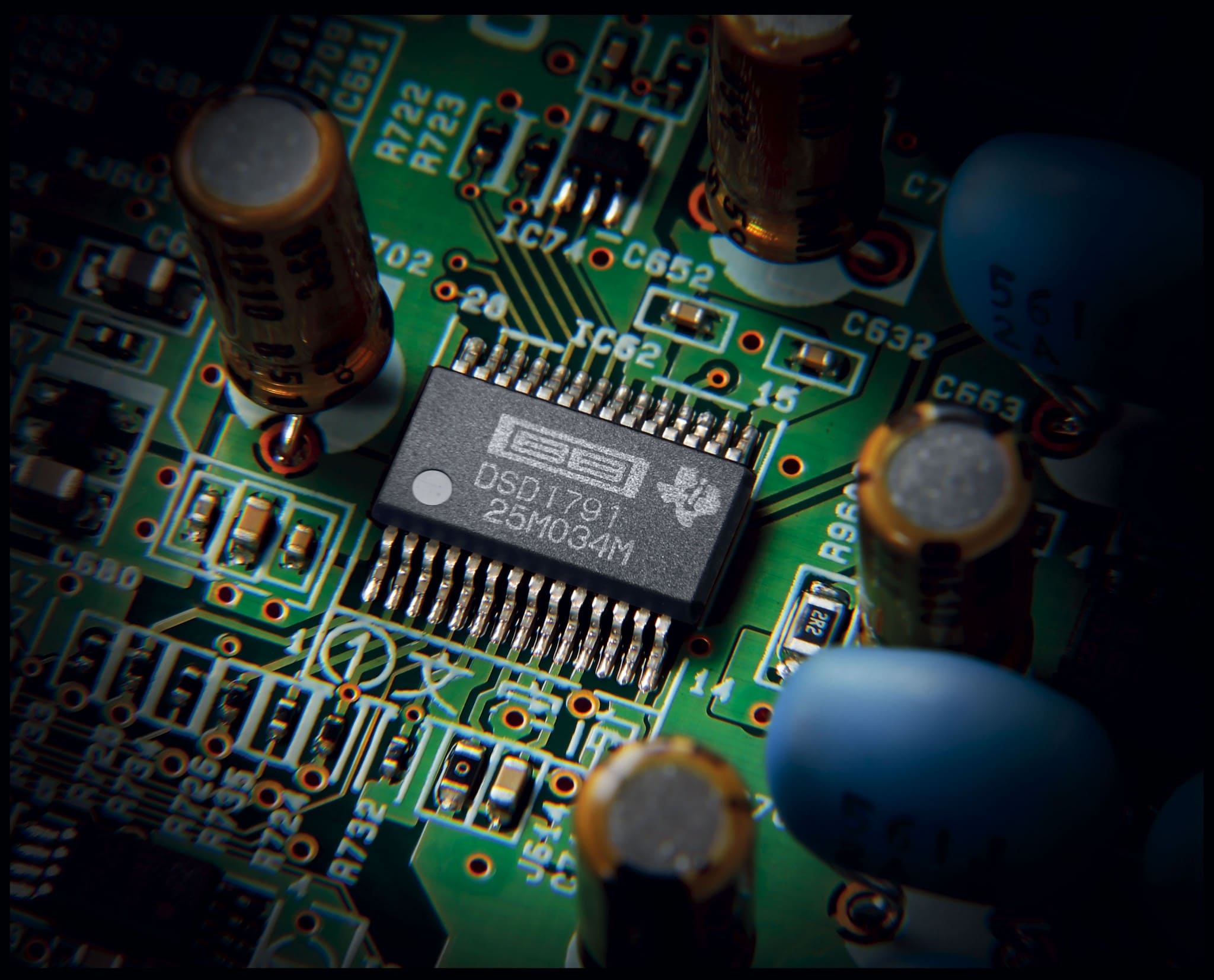
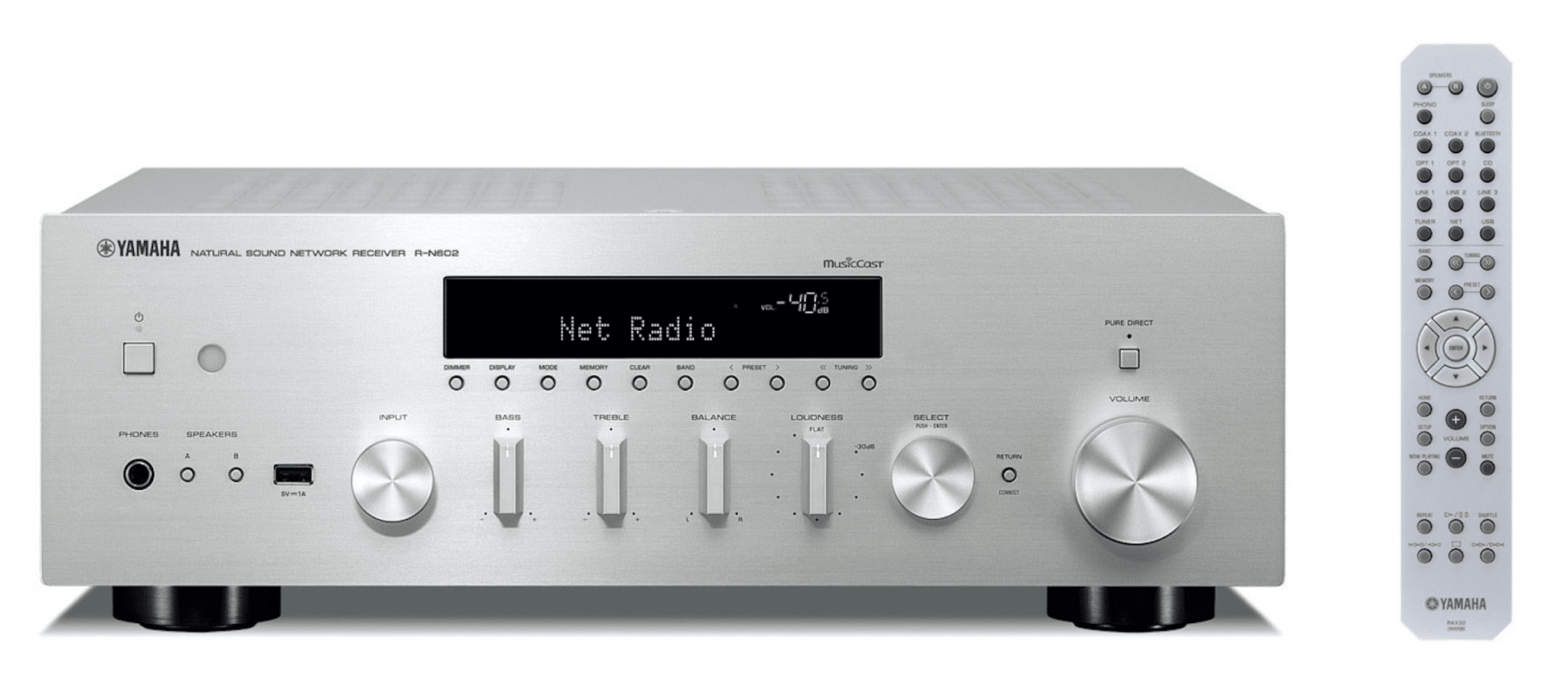


Hi Paul,
I have searched hundreds of threads and haven’t found the an answer to my question. I had the old Sony Muteki 7.2 for about 8 years and just used the woofers and 2 big front speakers. It was surprisingly one of the best sounding hifi systems I’ve heard. Sadly the amp hummed and died. I have purchased the Yamaha r-n602 and hooked it to the Sony speakers and what a terrible disappointment! The sound is rubbish.. What floor speakers would you recommend to make this amp sound outstanding? Thanks..
Hi Kylie – What’s your budget?
Thank you for the review!
Two years later, is this still a top recommendation in this range? Any other top new budget receivers?
I‚Äôm looking for a receiver for my Bose 301 Series ii and HSU VTF-2 subwoofer… likely be using AirPlay.
Thanks!
Mike
Yes Mike, this one is still up there. As an alternative, this example is also useful: https://www.amazon.co.uk/Onkyo-TX-NR575E-Receiver-Bluetooth-Chromecast-Silver/dp/B06Y24CSNN/ref=sr_1_1?ie=UTF8&qid=1534692020&sr=8-1&keywords=onkyo receiver
and this one…
https://www.amazon.co.uk/Denon-AVR-X2400H-Channel-Surround-Receiver-black/dp/B072LZMGHZ/ref=sr_1_1?ie=UTF8&qid=1534692207&sr=8-1&keywords=denon avr-x2400h
Hi Paul,
Thanks so much for your detailed review. I’ve just bought the RN602 to replace my parents’ old 80s JVC amp and am really pleased with it. Records sound excellent and I’m loving the spotify integration.
However, I’ve tried plugging in a new pair of Sennheiser momentum on ear M2 headphones and they sound weak, muffled and a bit fuzzy. I’m guessing they’re primarily designed for portable devices as they’re 3.5mm so I’m having to plug them into a 1/4″ adaptor – possibly the issue? Hoping it’s not a faulty headphone input! I’m fairly new to hi-fi separates and feel like I’m probably missing something obvious – do you think there’s a way to get the headphones sounding their usual best through the Yamaha?
Thanks in advance,
Joe
Thanks for your comments, Joe. As for the issue? Hmmm, your headphones shouldn’t be sounding like that. Firstly, you need to eliminate either or both. Do you have another pair of headphones you can use with the Yamaha and then can you plug the headphones elsewhere. Then see if the effect is replicated on both. Another issue might be that you haven’t pushed the plug in all the way, as it where. I do that all of the time 🙂 And I mean all the way into the Yamaha but also all the way into the adapter. Also, check the connection between the headphone cable and the headphone cups.
Thanks for the suggestions Paul. I’ve only got iPod in-ears to hand, tried those and it’s the same – fuzzy, lacking any power – but to a worse extent than the Sennheisers. Headphones and adaptor were both fully plugged in and both work fine when listening to other sources. I then tried plugging the headphone jack in partially and at one point actually got a half-decent sound out of them which is beginning to make me think it could be an issue with the input… Will make some calls tomorrow and see if I can get to the bottom of it.
I would now look at the adaptor – that might the the issue. Can you replace it?
I’ve tried 3 different ones, the issue persists! Got in touch with seller and arranging to get the unit returned for them to have a look at.
Good idea, Joe.
Hi Paul,
Great review. However, I am even more perplexed about my next step. I listen to music as follows: via apple music (mostly), CD’s then vinyls.
I’d like to have a simple set up with an amp, CD player and speakers. Overall budget around ¬£1000-1500.
The room Ill set this up in is around 4m x 2m.
Would really appreciate your input on what would be best for the money.
Many thanks, Omar
Hi Omar,
I would spend the most on your CD source and would head towards a Rega Apollo for around £500.
I would keep £100-£200 for cables. Look at QED from Amazon and buy the best you can afford.
Then you have the Yamaha for £340
And then the speakers? Take a look at these for £250 Рhttps://theaudiophileman.com/3020i-q-acoustics-speakers-review/
You really need half decent speaker stands for these. Check out Atacama for good value models. I like the solid HMS (£200) but even their lower cost models are good: http://www.atacama-audio.co.uk/c/speaker-stands.
Digital seems to be your main format so I would settle there and then save more cash for a vinyl source. Come back to me later if you need to source a turntable.
Hi Paul,
Thanks for the very quick response!! Very impressed.
Thank you for your input – will go as per your suggestion. Already have a turntable, a project elemental, but not happy with this so if you can suggest something suitable for the above config, will go with that.
Many thanks again,
Omar
Hi Omar
Not a problem 🙂
I would rather that you get the best digital-based system for yourself first and live with the Pro-Ject for now, if vinyl is secondary. If you want to buy now, then that opens up the budget question but a Rega Planar 1 is excellent at ¬£250 and a Rega Planar 3 is great at around ¬£550. There’s others out there though of course. You can use the phono amp in the Yamaha but better sonics will derive from an external phono amp. Rega’s ¬£100 Fono is good so is the Pro-Ject model for around ¬£50-¬£60.
Many thanks Paul.
Ill go with your config and will leave a review of the quality and sound (in layman terms sadly).
All the best,
Omar
Thanks Omar – I look forward to that. If you need further help later on, give me a shout.
Hi paul, a question from me. I have a pair of klipsch rf 52, and i m thinking of getting a stereo receiver mostly for internet radio and some good quality mp3 and flac. Also as my tv sound. I am considering yamaha and maybe r-n 602. What is your opinion?
Thanks for your question Lefteris. That would firstly depend on your budget. What would that be?
Top 600 euros…..
For that price and looking at the required features, I’d look at a Yamaha RX-V483 – https://uk.yamaha.com/en/products/audio_visual/av_receivers_amps/rx-v483/index.html
..but also consider an Onkyo TX-NR656 – https://www.eu.onkyo.com/en/products/tx-nr656-129914.html?tab=Stage
Onkyo has a habit of producing very nice amplifier modules which often challenge dedicated 2-channel hifi amps of a similar price.